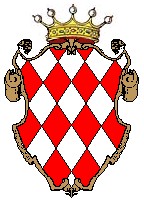"The age and distribution of E-V13 chromosomes suggest that expansions of the Greek world in the Bronze and later ages were the major causes of its diffusion.
Who was the E-V13 patriarch in Greece? He was perhaps one of the legendary figures of Greek mythology some of whom are said to have come from abroad. For whatever reason, his progeny grew, and were around to participate in the expansion of the Mycenaean world and the subsequent Greek colonization."
http://dienekes.blogspot.com/2008/07/expansion-of-e-v13-explained.html
Kadmo?
http://sr.wikipedia.org/sr/%D0%9A%D0%B0%D0%B4%D0%BC%D0%B
N Age (25y/gen) Age (30y/gen)
Nea Nikomedeia 8 149 1725 BC 2470 BC
Sesklo/Dimini 20 71 225 AD 130 BC
Lerna Franchthi 20 120 1000 BC 1600 BC
Crete 13 68 300 AD 40 BC
Haplozone 103 134 1350 BC 2020 BC
Aromuns (12) 32 71 225 AD 130 BC
Aromuns (8) 32 73 175 AD 190 BC
Slavomacedonians (12) 13 51 725 AD 470 AD
Slavomacedonians (8) 13 59 525 AD 230 AD
Albanians (12) 9 70 250 AD 100 BC
Albanians (8) 9 59 525 AD 230 AD
Albanians also coalesce to Roman/Late Antique times, consistent with the idea that their high frequency of haplogroup E-V13 (which reaches very high numbers in e.g. Kosovars) is not associated with high diversity. Founder effects in that time frame are the reason for the high frequency of E-V13 in them.
...
"The age difference between the Patriarch and the MRCA indicates that Variance/0.00069 overestimates the age of the MRCA somewhat (but not very much).
A prolific Patriarch's descendants are more likely to be sampled by scientists, and tend to have a higher STR variance. Hence, Variance/0.00069 overestimates the age of the MRCA, perhaps substantially.
Demographic factors, such as population growth, or short-term success by related males indicates that Variance/0.00069 overestimates the age of the MRCA.
In view of the above, and keeping in mind both the stochastic factors that cause STR variance to fluctuate around its expected value, as well as uncertainties in demographic history,
I do believe that ages calculated with the evolutionary mutation rate of 0.00069/locus/generation are significantly overestimated."
http://dienekes.blogspot.com/2008/07/how-y-str-variance-accumulates-comment.html
Ako sam dobro razumeo, ovde visoka varijansa P37.2 kod Srba još više dobija na značaju, obzirom da je reč o veoma plodnoj populaciji koja je ekspanziju doživela u skorijoj istoriji.
...
Evo kako je određen "evolutionary mutation rate of 0.00069/locus/generation".
Posmatrali su Maore i Cigane u Bugarskoj. Znaju kada su se doselili, pa utrdili koliko mutacija se dogodilo od dolaska na određeni prostor.
http://www.ebc.ee/EVOLUTSIOON/publications/Zhivotovsky2004.pdf
http://mbe.oxfordjournals.org/content/23/12/2268.full
Bitno je poređenje rezultata rada anaize zajedničkih predaka i poređenje sa izračunavanjem MRCA. Prvo pručavanje nije zasnovano na mutacijama, već nasleđu zajedničkih blokova. Mada i ovde je morala imati neka vrsta usporedbe sa poznatim događajuma.
Da je I2a Din tako mlada HG, imali bi više zajedničkih predaka, sa Poljacima u navijoj istorij(pozna antika, rani srednji vek)i , a ne iz bornzanog i gvozdenog doba.
Zanimljivo je da su i rezultai proračuna starosti metodom C14, bili pogrešni, dok nisu izvršili kalibraciju brojanjem godova starih stabala.
A, evo kako Kljosov vrši kalobraciju.:
http://www.scirp.org/journal/PaperInformation.aspx?paperID=8688
"For example, in 84 of 67 marker haplotypes of the Clan Donald (the common ancestor of which, John, Lord of the Isles, died in 1386, with the TMRCA equaling to 650 years before present, which is 26 “conditional generations” of 25 years each), there were 262 mutations. This gives 262/84 = 26 k, and hence k = .12 mutations per the conditional generation (25 years) per the 67 marker haplotype."
Ovde mi nešto nije najjasnije
"The same calibration procedure was applied to sets of slow markers, which have been introduced for calculations on the widest scale of tens and hundreds of thousand years (Klyosov, 2011a). Standard panels of combined “fast” and “slow” mark-ers, such as in the 67 through 12 marker haplotypes are not commonly suitable for such a
wide time scale due to multiple reverse mutations which can repeatedly and chaotically move back and forth, in the both directions, and significantly skew calculations. A careful selection of only the “slowest” 22 mark-ers from the 67 markers significantly reduces this effect (Klyosov, 2011a),
however, evaluation of accuracy of this 22 marker panel is only in progress (Klyosov, 2011b)."
I uopšte ta priča sa sporim i brzim markerima, i povratnim mutacijama...
"Essentially, when a mutation happens, and they happen now and then, they happen equally in the DNA of the descendant as “up” or “down”, e.g. from the ancestral 17 to either 18 or 16. If it mutates to, say, 18, the next move (which happens on average after 550 generations for 25 marker haplotypes or 460 gene- rations for 67 marker haplotypes) can be to 17 or 19, which are equally probable."
" The noticeably lower accuracy compared to the “faster” panels, particularly on a relatively recent timespans, can be explained by the fact that one mutation in the 22 marker haplo-types occurs on average once only in
1/0.006 = 167 generations, that is once in 4250 years (with a slight correction for back mutations, with the correction coefficient of 1.023). In other words, the 22 marker panel is too “crude” for timespans of only several millennia (or less), compared for example with the 67 marker haplotypes, in which one mutation occurs on average once in
1/0.12 = 8 generations. "
Zašto?
Kada pogledamo figure 7 i 8, koje se odnose na spore mutacije, vidi se da su tačke prilično rasute oko linije.
Čak čini se da više teže eksponencijalnom nego linearnom rastu.
Znači Nordtvedt i Kljosov su prepolovili starost Din-a povećavajući rezoluciju.
A šta ćemo sa nasumičnim povratnim mutacijama i bočnim vezama?
Neću da tvrdim da su pogrešili.
Ali da bi se uopšte razmatrao ovaj proračun statosti TMRCA za Din, morao bi se publikovati u nekom naučnom časopisu, pa da se vidi.








